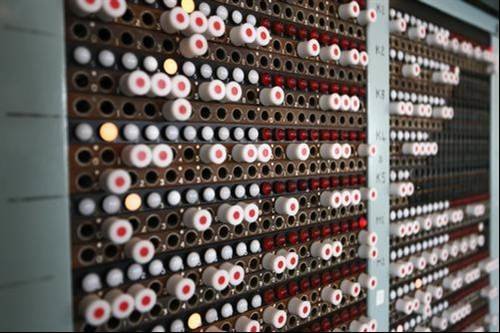The computers that won the war: Bletchley Park's codebreaking equipment is rebuilt
Tunny in Action - 1
During the war, the Tunny operator would use the information provided by the codebreakers to set the machine in exactly the same way as the German operator had done when the message was transmitted. This would be different for every message. The settings of the Lorenz machine were entered by inserting white pegs into the respective jack fields located in the centre of the rack.
The Tunny Gallery, opened at The National Museum of Computing at Bletchley Park on 26 May 2011, tells the incredible story of the intercepti



